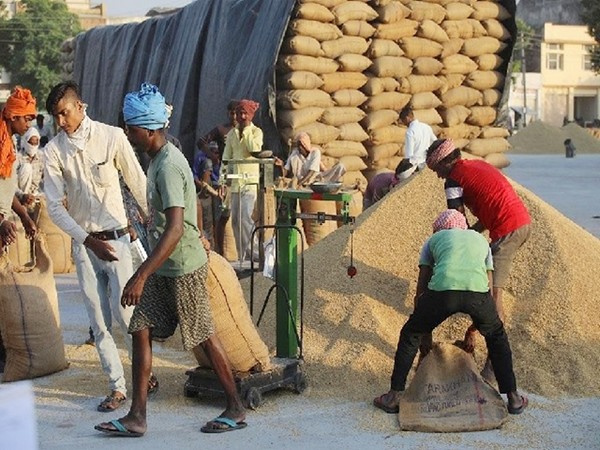‘When the stocks are received these are supposed to be shifted inside a covered area and stored properly. But when there is no adequate manpower, it becomes difficult to shift them inside on time.’
New Delhi: Mountains of food grains stored at the central granary like that of the Food Corporation of India (FCI) rot or get wasted every year
The Ministry in its written reply to the Lok Sabha earlier this month said that between March 2020 and December 2021, around 3,500 Metric tonnes of food grains were wasted. The data also reveals that every year, more than 1500 MT of food grains gets wasted in the godowns of the Ministry of Consumer Affairs, Food and Public Distribution.
The last six years’ data shared by the Ministry shows that 2016-17 and 2018-19 witnessed the highest wastage of food grains from the Central granary. In 2016-17, the ministry reported that over 8,200 MT of food grains were wasted or had rotten at its godowns, while in 2018-19, over 5000 MT of such good grains had rotten in their godowns.
These food grains include rice, wheat and pulses which are centrally procured by the government and are kept at the granaries managed by the Ministry of Consumer Affairs, Food and Public Distribution for its distribution among the poorest of the poor population in India. According to officials of FCI, the food grains kept at the godowns sometimes get infested by pests; also, procurement of poor-quality food grains or rains or flooding and sometimes mismanagement leads to losses and damages to the food grains kept at these godowns. On the condition of anonymity, an official from the FCI who manages central godowns, said: “Some of the real reasons for the wastage of rotting of food grains is due to the lack of storage facilities and shortage of manpower. When the stocks are received these are supposed to be shifted inside a covered area and stored properly. But when there is no adequate manpower, it becomes difficult to shift them inside on time. It also happens such that the godowns receive much more food grains than their storage capacity; in such a scenario, there is no option but to store them outside, and if there is rain, all the stocks gets damaged. Pests is also a factor, although fumigation is done regularly, still pest infestation is a major problem.”
The government is also adding storage capacities in different parts of the country to avoid wastage of food grains and in the last five years, the government has created an additional 50,000 MT of storage capacity in states like Manipur, Arunachal Pradesh, Nagaland, Kerala and Himachal Pradesh.
However, in states like West Bengal, Uttarakhand, Jammu and Kashmir, and Maharashtra, huge quantities of food grain wastage has been reported between March 2021 and December 2021. For example, the central godowns from West Bengal food grains wastage of about 179 MTs, while for Uttarakhand it was more than 500 MTs while for Jammu and Kashmir it was about 242 MT.
The Ministry, in its report, also said that it is taking measures to ensure “zero wastage” of food grains is achieved in the coming years and for that, steps like modernisation of storage facilities like that of the introduction of steel silos for storage of food grains is being introduced from this year. Rat control measures and effective fumigation, among other steps, are also being taken.

